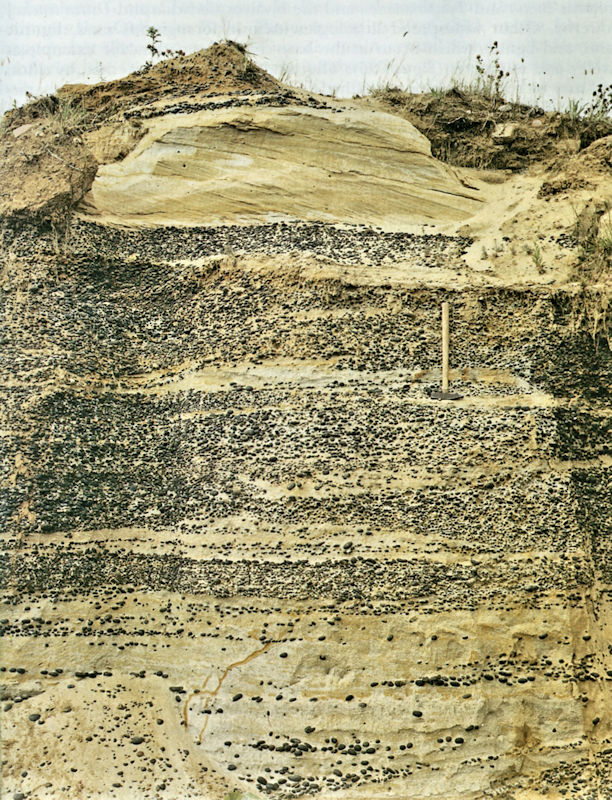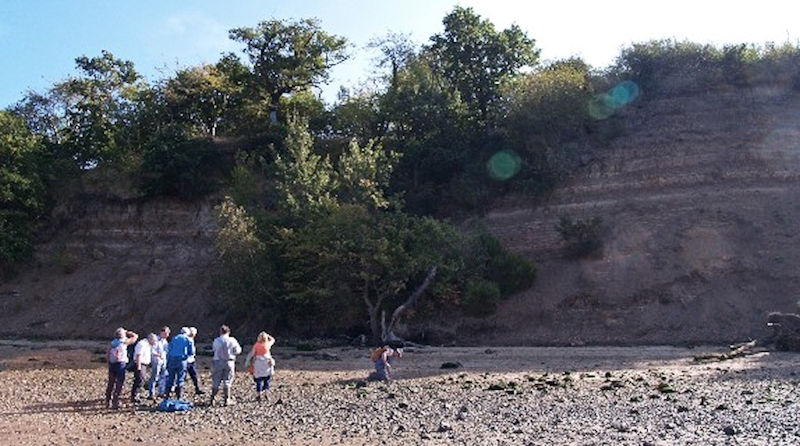The Extinction of the Dinosaurs

The end of the Cretaceous period saw the extinction of the dinosaurs and the gradual disappearance of the Chalk Sea as sea level fell throughout the world. The next chapter in our story involved further inundations in later geological periods which deposited a great thickness of other rocks over the whole area. Much of Essex is therefore built on these younger rocks but the Chalk is, of course, still present beneath the surface, in some cases as deep as 200 metres below ground level. In many cases the younger rocks consist of pebbles, sand or gravel, the remains of countless billions of flint nodules that have been removed from the chalk and ground down by erosion.
The first rocks to be laid down on the eroded chalk surface are a variety of sands clays and shell beds deposited in shallow marine or estuarine conditions. The first of these was the Thanet Sand, which sits on top of the Chalk and can be clearly seen in south Essex in many of the Thurrock chalk quarries and in the north in the disused pits near Sudbury. Following the Thanet Sand are a group of deposits now known as the Lambeth Group but formerly commonly known as the Woolwich and ReadingBeds. These beds are currently exposed in one or two pits in Thurrock.
After a rise in sea level shallow marine conditions were established again leading to deposition of a pebble bed overlain by yellow, shelly sand known as the Oldhaven Beds. In south London the equivalent strata consists of thick pebble beds known as the Blackheath Beds. East and northwards from Thurrock these beds are replaced by sandy clays indicating deeper water conditions. Formerly known as the London Clay Basement Bed they are now classified as the Harwich Formation. This formation is well exposed at Walton-on-the-Naze and at Wrabness on the River Stour, where the cliffs reveal numerous seams of volcanic ash, evidence of volcanic activity in the Eocene period. Sea level continued to rise leading eventually to deposition of dark blue clay across the whole region. This was the London Clay Sea – the next chapter in our story.

